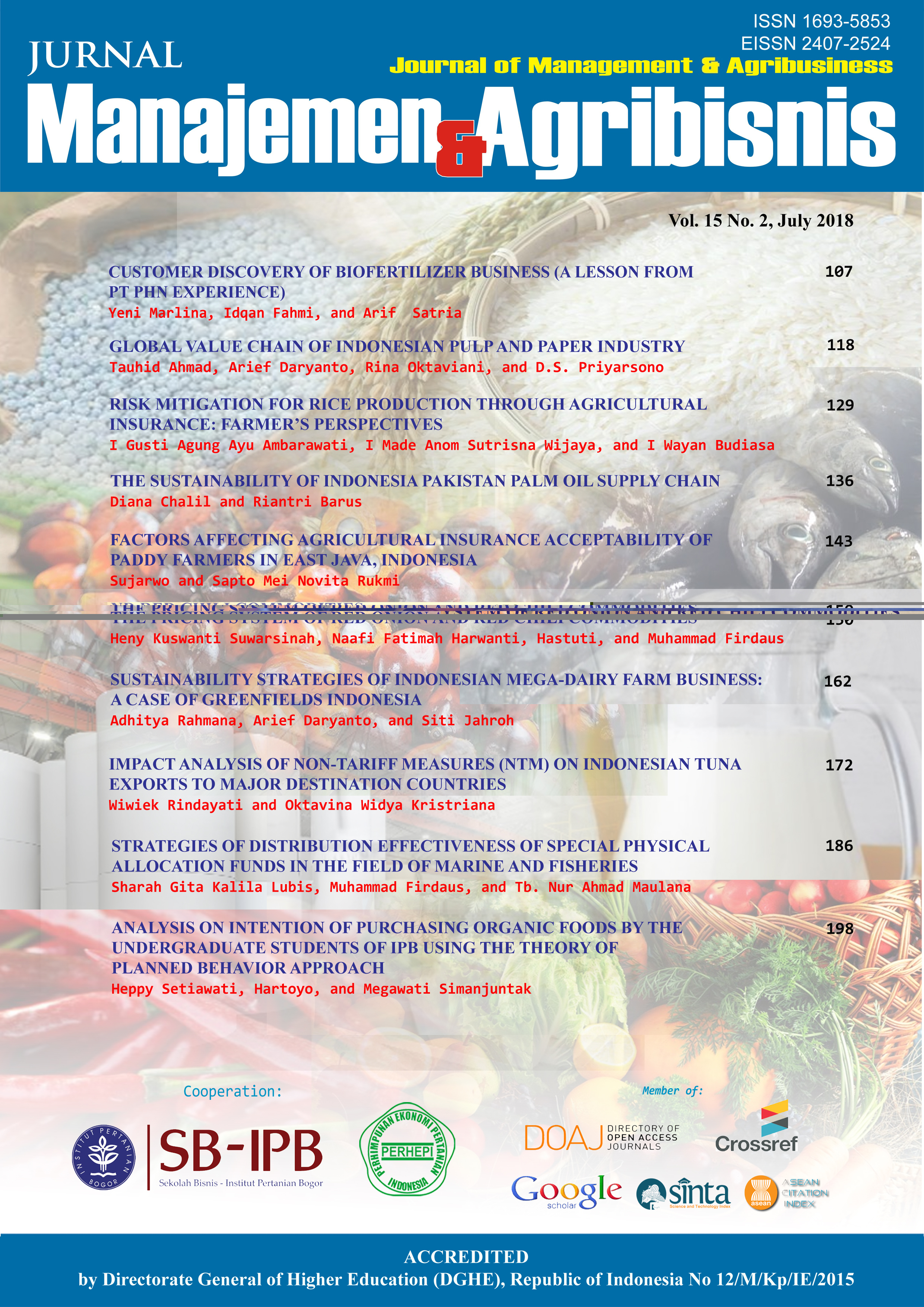Impact Analysis of Non-Tariff Measures (NTM) on Indonesian Tuna Exports to Major Destination Countries
Abstract
Currently, international trade is hampered in both tariff and non-tariff measures. Non-Tariff Measures (NTMs) are likely applied by some major trading countries. The NTM policy mostly applies Sanitary and Phytosanitary (SPS) and Technical Barrier to Trade (TBT). Tuna commodity is one of Indonesian potential exports facing NTM barriers. Indonesia has exported its tuna to a number of major destinations including China, Japan, Thailand, United States, South Korea, Singapore, and Vietnam. This study aims to analyze the export performance and NTMs impact on the Indonesian tuna export commodity. The methods used included descriptive analysis through inventory approach (coverage ratio and frequency index) and regression analysis of gravity model panel data from the period of 2009 – 2013 with the cross sectional data of the six major destination countries. The results show that United States as a country imposing the highest NTMs and frozen tuna is the most affected commodity group by NTM effects. The gravity model estimation results show that SPS and TBT affect tuna fish exports with positive coefficients of 0.011 and 0.015 respectively.
Keywords: gravity model, NTM, SPS, TBT, tuna fish
Authors
Authors who publish with this journal agree to the following terms:
- Authors retain copyright and grant the journal right of first publication with the work simultaneously licensed under a Creative Commons Attribution License that allows others to share the work with an acknowledgement of the work's authorship and initial publication in this journal.
- Authors are able to enter into separate, additional contractual arrangements for the non-exclusive distribution of the journal's published version of the work (e.g., post it to an institutional repository or publish it in a book), with an acknowledgement of its initial publication in this journal.
- Authors are permitted and encouraged to post their work online (e.g., in institutional repositories or on their website) prior to and during the submission process, as it can lead to productive exchanges, as well as earlier and greater citation of published work (See The Effect of Open Access).

